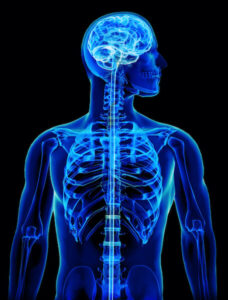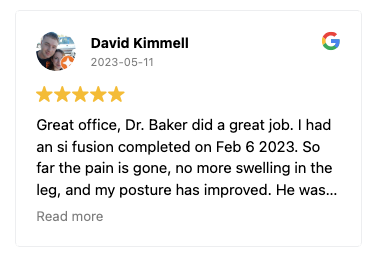Chiari Decompression
The exact cause of a congenital Chiari malformation type I is not known. A problem during fetal growth may cause the defect.
Understanding Chiari Decompression & Malformation
Chiari malformations are neurological anomalies in which brain tissue extends into the spinal canal. Typically a result of an abnormally shaped or undersized skull, the consequent downward pressure forces the brain into this region.
Malformations like chiari decompression can either be congenital, meaning present at birth, or they can develop due to other conditions during adulthood.

Depending on the severity and type, Chiari malformations can manifest symptoms ranging from headaches and dizziness to muscle weakness, though they might also remain asymptomatic.
Types of Chiari Malformations: Causes and Treatments
There are primarily two types of Chiari malformations, Type I and Type II.
Type I Malformation
Type I typically emerges in adolescence or adulthood. While its exact cause remains undetermined, a combination of genetic predispositions and environmental factors during fetal development is believed to play a role.
Treatment is usually only pursued if symptoms, such as headaches or motor difficulties, are present. It often involves surgical procedures like posterior fossa decompression to relieve pressure.
Type II Malformation
Type II is more severe and is associated with a condition called myelomeningocele, a type of spina bifida where the spinal canal and backbone don't close before birth.
Treatment for Type II often requires surgery, both for the malformation itself and the associated spinal issues.
Request an Appointment
The Role of Chiari Decompression Surgery
Chiari decompression surgery is a pivotal procedure designed to alleviate the pressure on the brain and spinal cord and restore the regular flow of cerebrospinal fluid (CSF).
Through the removal of a section of bone at the skull's base, the surgery aims to reduce the compression, allowing for additional space for the brain above the spinal canal, which can significantly alleviate the associated symptoms.
Understanding the Brain and Spinal Cord in the Context of Chiari Decompression and Chiari Malformation
The brain and spinal cord form the central nervous system, orchestrating numerous physiological functions and ensuring optimal bodily performance.
The robustness of the neurological pathway, extending from the brain through the spinal canal, is paramount.
In the context of Chiari Malformation, disruptions or obstructions within these pathways, particularly impacting cerebrospinal fluid dynamics, necessitate comprehensive medical intervention.
Implications of Chiari Malformation on Neurological Integrity
Chiari Malformations, specifically Chiari Malformation Type I, impact cerebrospinal fluid dynamics, critically affecting neurological functionality and homeostasis.
The delineation of these anatomical incongruities, whereby cerebellar tonsils extend into the spinal canal, impedes the conventional flux of cerebrospinal fluid, potentially engendering a spectrum of symptoms such as neck pain and muscle weakness, and in particular instances, propelling complex complications like syringomyelia and tethered cord syndrome.
The diagnostic framework frequently necessitates exhaustive scrutiny through imaging tests, including magnetic resonance imaging (MRI), to confirm diagnosis and facilitate an in-depth comprehension of its magnitude and severity.
Conversely, in the nuanced matrix of cerebrospinal fluid dynamics, the obstruction and subsequent accrual of excess fluid can critically compromise the unimpeded transmission of fluid between the brain and spinal cord, catalyzing an array of symptoms and physiological perturbations.
The structural aberration at the posterior portion of the skull, particularly implicating the occipital bone, plays a pivotal role in the aberrations in fluid dynamics within the intracranial space and spinal canal.
Notwithstanding its variable reported incidence, discernible escalation in diagnosed cases has been observed, attributed to advancements in diagnostic techniques and a more sophisticated understanding of malformations in contemporary medical discourse.
Comprehension of the specific Chiari Malformation type remains paramount, implicating both treatment trajectory and potential outcomes.
Chiari Malformation Type I, occasionally identified during imaging tests for unrelated health problems, may be asymptomatic in a substantive majority of individuals but can also manifest pronounced symptoms necessitating surgical intervention.
Particularly in surgical procedures such as Chiari decompression, the objective becomes to establish more room within the posterior fossa, alleviating pressure by ensuring cerebellar tonsils no longer exert pressure on the spinal cord, which can subsequently stabilize symptoms and thwart further complications.
The surgical procedure typically encompasses the removal of a section of the occipital bone, assuring more space for the displaced cerebellar tonsils and subsequently facilitating the normalization of cerebrospinal fluid dynamics.
In the post-operative phase, the stabilization of symptoms and mitigation of further complications assume paramount importance, with the surgeon deploying both operative findings and iterative imaging tests, including CT scans and MRI scans, to meticulously oversee the patient’s recuperation and assure no accumulation of excess fluid within the intracranial space.
Ensuring that the patient receives optimal post-operative care, is vigilantly monitored for signs of complications, and is maneuvered on a recovery trajectory with adequate pain management, potential administration of muscle relaxants, and adherence to guidelines concerning normal activity, embodies an essential component.
A strategic approach to managing symptoms, facilitating the conventional flow of cerebrospinal fluid, and shielding against potential complications, such as repeat surgery or management of rare complications, underscores a multidimensional approach to care.
Patients, fortified with a positive attitude and a comprehensive understanding of their condition, are more proficiently equipped to navigate the surgical journey, engage in substantive discussions with healthcare providers, and actively participate in decision-making processes related to their health trajectory.
Surgical Approaches for Chiari Malformation
Chiari malformation and its associated anomalies, such as tethered spinal cord and excess cerebrospinal fluid, significantly impede the normal flow of cerebrospinal fluid between the brain and spinal cord, impacting neurological health.
One established intervention for mitigating these implications is chiari decompression surgery, specifically posterior fossa decompression, which endeavors to stabilize symptoms and facilitate improved cerebrospinal fluid (CSF) dynamics
Eligibility and Candidacy for Surgery
Chiari malformation and its associated anomalies, such as tethered spinal cord and excess cerebrospinal fluid, significantly impede the normal flow of cerebrospinal fluid between the brain and spinal cord, impacting neurological health.
One established intervention for mitigating these implications is chiari decompression surgery, specifically posterior fossa decompression, which endeavors to stabilize symptoms and facilitate improved cerebrospinal fluid (CSF) dynamics
Post-Operative Quality of Life
Post-surgical quality of life is a pivotal consideration. Some patients observe a significant alleviation of symptoms and enhanced quality of life post chiari decompression surgery.
Certain individuals may continue to experience persistent symptoms, necessitating ongoing management and periodic imaging tests to monitor CSF flow and any potential complications.
Alternative and Preceding Interventions
Prior to contemplating surgery, alternative interventions may be explored, such as pain control utilizing pain medication or lifestyle modifications.
When symptoms such as severe neck pain or muscle weakness become refractory to conservative management or when imaging tests reveal significant anatomical anomalies, surgical intervention might transition from a last resort to a warranted step.
Potential Complications and Challenges
Chiari decompression, while demonstrably impactful, is not without potential serious complications such as nerve injury, blood clots, or issues with pain control post-operatively.
The capacity to successfully relieve pressure without inducing additional complications necessitates a meticulous surgical approach and comprehensive pre-operative evaluation to minimize risks.
Journey to Surgery with Dr. Baker
For individuals experiencing the impacts of chiari malformation, the journey towards surgical intervention with a specialist neurosurgeon in Texas like Dr. Baker commences with an exhaustive evaluation and discussion regarding symptoms, medical history, and expectations.
Following an imaging investigation, typically involving an MRI scan, a detailed consultation elucidates surgical options, potential risks, and outlines the step-by-step process, ensuring that patients are capacitated to make informed decisions regarding their neurological health.
Frequently Asked Questions about
Chiari Malformations & Chiari Decompression
What are the Signs & Symptoms of Chiari Malformations?
Chiari malformations can cause various symptoms and be associated with other conditions, such as a syrinx, hydrocephalus, and sleep apnea.
A syrinx is a fluid-filled cyst in the spinal cord that can expand, pressuring the spinal cord and potentially affecting neuromuscular function, causing limb weakness or issues with walking and breathing. Diagnosis may require an MRI scan.
Hydrocephalus involves cerebrospinal fluid obstruction, leading to fluid buildup and increased pressure inside the head, causing the skull bones to expand.
Sleep apnea, characterized by brief pauses in breathing during sleep, can also occur in individuals with Chiari malformations and may require a sleep study for diagnosis and subsequent treatment.
Additional symptoms can include rapid eye movements, muscle weakness, balance issues, abnormal reflexes, nerve issues, hoarseness, and difficulty swallowing.
What Causes a Chiari Malformation Type I?
What issues can Type 1 Chiari Malformation cause in toddlers, children and teens?
How Is a Chiari Malformation Type I Diagnosed?
How Is Chiari Malformation Type I Treated?
What Are Other Health Problems Caused By a Chiari Malformation Type I?
What is Homeostasis?


Dr. Baker specializes in neurosurgery, neurosurgical spine surgery, neurotrauma, brain tumors, spinal tumors, and peripheral nerve damage treatment.









